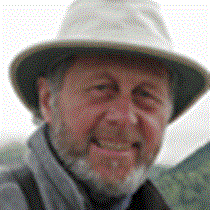Juneau, Alaska
Few cities have had the confusion of being named after at least four different people over the years. Juneau is one of them. It started as Pilzburg in 1870, when George Pilz arrived in this traditional Tlingit territory asking the seasonal hunter/gatherers to find gold for him. He was shown the way. Richard Harris and Joseph Juneau, mining engineers with some experience, were summoned. John Muir gave them some key directions. The dwarf community, located on the steep beach of what was to be known Gastineau Channel, soon took on the name Harrisburg. But as with any remote settlement that grows exponentially, “…the men who moil for gold..." paid little attention to law and order. So, by 1881, this new town, located in a new territory that had been purchased from Russia by William Seward just 14 years earlier, needed both vision and supervision. Thus, the US Navy dispatched Commander Charles Rockwell to the area, who promptly announced that the settlement would henceforth be named Rockwell. The hard rock miners balked. They demanded that it be named in honour of Joseph Juneau, the respected engineer who had come from Quebec, Canada. Juneau was the name that stuck.
The town grew, from 1600 people in 1910 to the 31,000 that now call it home. Although considered the capital even in the early 1900s, Juneau was named the official Capital when statehood was granted to Alaska in 1959. The mines went dry, but tourism and commercial fishing grew. With up to five massive cruise ships visiting each day, and offloading up to 10,000 people, the tourist dollar now far exceeds all other economic endeavours.
Mendenhall Glacier has long been an attraction here. It has receded remarkably quickly, its broad, carved valley now heavily forested and dotted with homes. But the glacier still presents a magnificent sight to those thousands who visit daily throughout the summer. Even in today’s mist, we strolled along the feeder stream to watch the late arrivals of the sockeye salmon spawning event, and to see a young black bear moving quickly upstream in search of fat-rich fish to tide him over through his oncoming winter sleep.
There was time to shop for gifts and time to walk up into the Gold Creek valley, the same waterway that led George Pilz, and those who followed, to the mother lode that began the Juneau Gold Rush. It was a minor event in gold rush history, but it led to a wonderful but exceedingly wet city.
Few cities have had the confusion of being named after at least four different people over the years. Juneau is one of them. It started as Pilzburg in 1870, when George Pilz arrived in this traditional Tlingit territory asking the seasonal hunter/gatherers to find gold for him. He was shown the way. Richard Harris and Joseph Juneau, mining engineers with some experience, were summoned. John Muir gave them some key directions. The dwarf community, located on the steep beach of what was to be known Gastineau Channel, soon took on the name Harrisburg. But as with any remote settlement that grows exponentially, “…the men who moil for gold..." paid little attention to law and order. So, by 1881, this new town, located in a new territory that had been purchased from Russia by William Seward just 14 years earlier, needed both vision and supervision. Thus, the US Navy dispatched Commander Charles Rockwell to the area, who promptly announced that the settlement would henceforth be named Rockwell. The hard rock miners balked. They demanded that it be named in honour of Joseph Juneau, the respected engineer who had come from Quebec, Canada. Juneau was the name that stuck.
The town grew, from 1600 people in 1910 to the 31,000 that now call it home. Although considered the capital even in the early 1900s, Juneau was named the official Capital when statehood was granted to Alaska in 1959. The mines went dry, but tourism and commercial fishing grew. With up to five massive cruise ships visiting each day, and offloading up to 10,000 people, the tourist dollar now far exceeds all other economic endeavours.
Mendenhall Glacier has long been an attraction here. It has receded remarkably quickly, its broad, carved valley now heavily forested and dotted with homes. But the glacier still presents a magnificent sight to those thousands who visit daily throughout the summer. Even in today’s mist, we strolled along the feeder stream to watch the late arrivals of the sockeye salmon spawning event, and to see a young black bear moving quickly upstream in search of fat-rich fish to tide him over through his oncoming winter sleep.
There was time to shop for gifts and time to walk up into the Gold Creek valley, the same waterway that led George Pilz, and those who followed, to the mother lode that began the Juneau Gold Rush. It was a minor event in gold rush history, but it led to a wonderful but exceedingly wet city.




